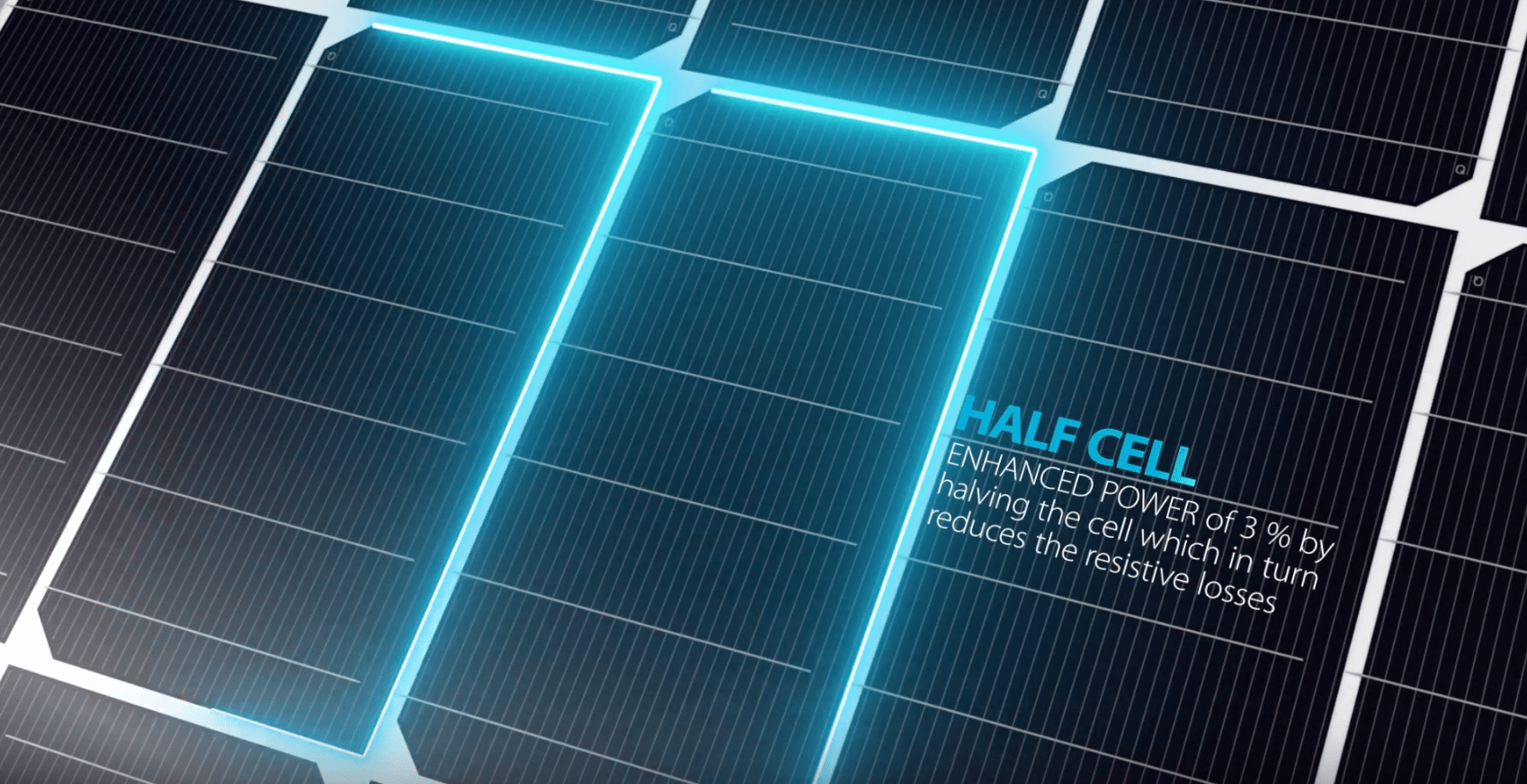One of the manufacturing giants in the solar industry is Hanwha Q Cells, a company with a vast domain in the production of high-quality solar panels.
One of the most interesting Q Cells products on the market is the Q.Peak Duo-G5 module.
This product was the winner of the Intersolar Award 2018 in the Photovoltaics category, due to the innovative and high-quality value of the Q.ANTUM technology.
The benefits of this product exceed the company’s previous versions in standards, performance and especially design, but let’s take a look at some of the features of this amazing solar panel.
What Is So Special About Q Cells Q.Peak Duo-G5?
Hanwha is the only representative of the Q.ANTUM technology in the world, with high standards in R&D tests, efficiency (up to 19.9%!) and manufacturing capability.
This technology is based on the concept of the PERC cells (rear contacts in the cell that allow the reflection of photons, increasing energy output), but enhances the performance, optimises the production and redefines the structure of the modules, taking the PERC tech to a whole new level.
Six Busbar Technology
When photons hit the surface of the solar module, they release or activate the flow of electrons.
These electric charges must travel through a thick phosphorous layer in order to reach the busbars which act as highways for electrons. However, many electrons lack the kinetic energy to reach these busbars and therefore get lost. This effect is generally represented with a series resistance.
One unique feature of this solar panel is that instead of having 2 or 4 busbars (conductors through which electrons flow to the output of the module), this module is designed with six busbars.
The great advantage of increasing the number of busbars is that the distance between them is reduced, which leads to a lower series resistance and even reduces congestion of electrons through the busbars.
This translates into 3% more power output when compared to traditional technologies.
Half-Cell Technology
Another interesting and most curious characteristic of the Q.Peak Duo-G5 model is that the cells are sliced in half using laser technology.
By cutting cells into two halves, the current is also reduced to half. This reduces the heat generated in the cell and therefore reduces losses attributed to thermal factors (generally attributed to increased temperature and lack of air circulation).
Moreover, resistive losses are also reduced since current values are lower, therefore, production is increased by 3%.
Parallel Connection
Most solar panels come with 3 bypass diodes.
These devices allow the flow of current from other modules in the same string when there is a shading condition without any creation of hotspots.
When one bypass diode acts, a sub-module (a section of the panel) stops producing electricity, leaving only 2/3 of the panel generating electricity.
If the shaded area increases and covers the whole lower part of the module, then all bypass diodes act (even if the shade covers less than 30% of all the surface area) and the module stops producing until the shade is removed.
This is hugely undesirable since considerable losses are attributed to it.
The Q.Peak Duo-G5 model solves this situation by making a parallel connection between two sides of the module.
In other words, even if shade covers the lower part of the panel, the upper side will continue producing!
Leading Industry Warranty
Most solar manufacturers guarantee that the performance of their modules won’t reduce any more than 80% of power output after 25 years of operation.
This is the conventional warranty in most technologies.
The Q.Peak Duo-G5 also innovates in this aspect, providing an 85% power output warranty after 25 years of operation.
This translates into a maximum of 0.54% degradation factor per year.
Round Shape Conductors
The shape of the conductors is another innovation. Typical solar cells use flat ribbons to transport electricity. This generates shading caused by the ribbons of the cell and reduces the number of absorbed photons.
In comparison, Q.Peak Duo-G5 cell modules are designed with round shaped busbars that drastically reduce shading over the silicon layer.
This maximises production and adds 2.5% more energy to each cell when compared to traditional technology.
Additional Features
Other factors also reduce the production and lifespan of the traditional solar module.
For instance, potential induced degradation (PID) is an undesirable element associated with the presence of leakage currents on high voltage strings with elevated humidity and temperature levels.
Q.Peak Duo-G5 tech ensures higher resistance to this effect and is even rated to withstand installations of 1500 VDC!
Moreover, LID also plays a role in the reduction of power output and Hanwha Q Cells is one of the few companies that have delved deeply into this effect and developed an Anti-LID technology.
Conclusion
As you can see, the development, innovation and creativity involved in the design of these solar modules make them a true diamond in the solar industry.
Not only because of their elevated efficiency values and the aesthetics of monocrystalline technology, but also because they address the problems of today’s solar panel manufacturing industry and present a unique module that solves all of these problems in a single product.
Here is another great explanation of why the Q Cells Q.Peak Duo-G5 is an amazing product:
Download the datasheet here.
Photo credit: Q Cells



